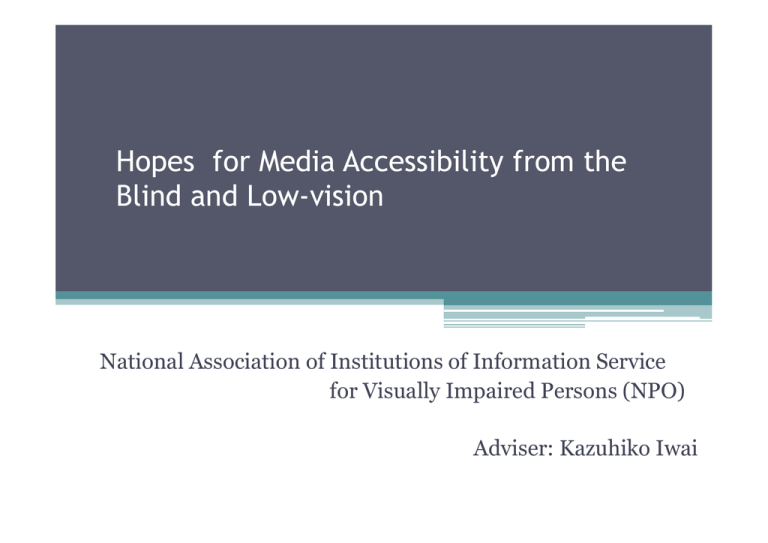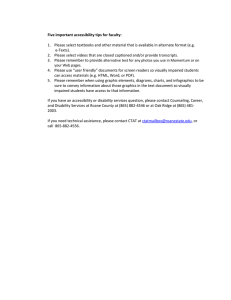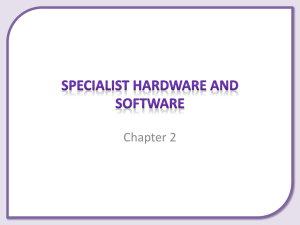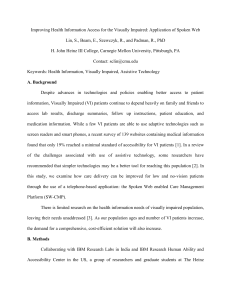Hopes! for Media Accessibility from the Blind and Low-vision
advertisement

Hopes! for Media Accessibility from the Blind and Low-vision National Association of Institutions of Information Service for Visually Impaired Persons (NPO) Adviser: Kazuhiko Iwai 1. In front of the TV, Visually Impaired Persons Strain their Ears According to the Ministry of Health, Labor and Welfare's, "Survey on Living of Impaired Persons" (2008), access to information by the visually impa ired is sought in the following order: TV 66.0%, Family and Friends 55.7%, Radio 49.3 %. !In the Great East Japan Earthquake, •! how was the delivery of information from TV used to save lives of visually impaired persons •! how did it help them endure life as displaced persons? !In any emergency, •! it is crucial to disseminate information from a number of sources, including data broadcasting, the internet, cell phones, etc., along with television broadcasts. •! although practical use of J-ALERT (a nationwide instant alarm system) is considered, there is no consideration regarding persons with disabilities. •! such transmission systems should be installed in places where visually impaired persons frequent. •! In addition, the Japanese Government must specify the radio station which is the audio source of the TV program and it should be available as an everyday life tool. !Visually impaired persons have the serious disadvantage and uneasiness of being unable to access data broadcasting , which is shown to be their leading information source in times of emergency. 2. Expectations of Early Achievement of "Administrative Guidelines to Promote Broadcasting for Visually/Hearing Impaired“ The percentage of the audio descriptions commentary broadcasting time among total broadcasting time is following: •! NHK (General) 5.9% (up 0.2% year-on-year), •! NHK (Education) 10.0% (0.0% year-on-year), •! five key stations in Tokyo average 0.6% (up 0.1% year-on-year). Without audio descriptions broadcasting, we can understand many things whenever •! the announcer does not use the demonstrative pronoun such as "this or that" •! explain audibly a brief description of the charts and letter information. •! as for comments in a foreign language, we can understand by the dubbing as much as possible, or performing a voice-over by Japanese translation !we have to accomplish the following tasks for increase of audio descriptions program: •! Create an effective roadmap about audio descriptions broadcasting for visually impaired persons, •! set up an organization to monitor its promotion under participation of the party concerned. •! Ensure working hours enough to produce audio descriptions broadcasting as a process of whole program production, and reserve the specialists by training of staff, etc. •! Promote the employment of the person concerned, and cooperate with specialized agencies such as an institution of information service for visually/hearing impaired.






